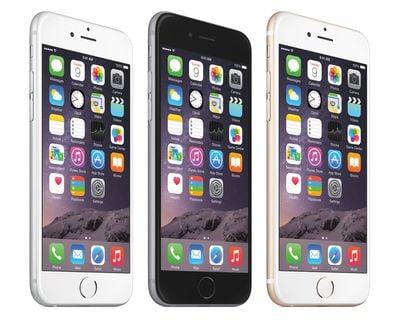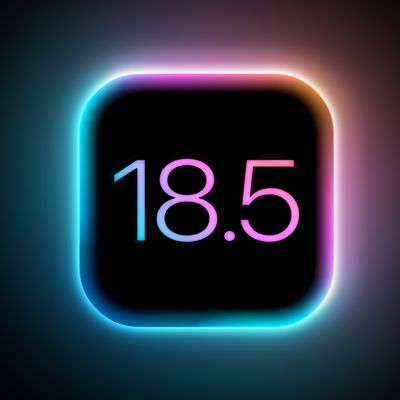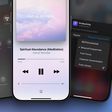Audio Testing Confirms iPhone 6 Not Yet Capable of Direct HD Audio Playback
Earlier this year, Apple was rumored to be adding support for high-definition audio playback in iOS 8 and shipping new EarPods with the iPhone 6 in order to support this 24bit/96kHz standard. Apple ultimately made no such announcements for iOS 8 or the iPhone 6, and Mashable has now confirmed with some testing that Apple's latest iPhone 6 does not currently support high definition audio playback.

With the help of audio testing expert David Ranada, Mashable tested several sample .wav files encoded at a 96kHz sampling rate with 24 bits per sample. The tracks were played using third-party apps such as Onkyo's HF music player and recordings were made through the headphone jack to determine the quality of the audio output.
The results show that iPhone 6 does not yet support HD audio playback, even though the audio hardware inside the phone may be capable of 24bit/96kHz output. According to teardown analyses, Apple's iPhone 6 includes the custom made Cirrus Logic 338S1201 chip, which is likely the successor to the Cirrus Logic CS42L61 chip used in previous iPhone models. Though also a custom build, the older CS42L61 chip is part of Cirrus Logic's CS42L51 family, which supports 24bit/96kHz HD audio.
It's hard to conceive of Apple either creating a custom chip that's less capable than the equivalent off-the-shelf component, let alone downgrading the audio capabilities of the iPhone's DAC in subsequent generations. So it stands to reason the DAC on board the iPhone 6 is capable of sampling 24-bit/96kHz audio.
It's possible, however, that Apple could later update iOS 8 with support for HD audio and enable the playback of hi-res music through the iPhone's headphone jack. Apple is accepting 24bit/96kHz uploads from musicians and is allegedly preparing to enable high-definition 24-bit downloads from iTunes.
Customers who want HD audio sooner will have to look at Lightning-equipped audio devices such as the recently announced Fidelio M2L headphones from Philips. The Fidelio M2Ls will connect to an iPhone or iPad via the Lightning port and will support 24-bit audio using an internal DAC and amplifier built into the headphone unit.
Popular Stories
Despite being more than two years old, Apple's AirPods Pro 2 still dominate the premium wireless‑earbud space, thanks to a potent mix of top‑tier audio, class‑leading noise cancellation, and Apple's habit of delivering major new features through software updates. With AirPods Pro 3 widely expected to arrive in 2025, prospective buyers now face a familiar dilemma: snap up the proven...
Apple plans to release an all-new super thin iPhone this year, debuting it alongside the iPhone 17, iPhone 17 Pro, and iPhone 17 Pro Max. We've seen pictures of dummy models, cases, and renders with the design, but Lewis Hilsenteger of Unbox Therapy today showed off newer dummy models that give us a better idea of just how thin the "iPhone 17 Air" will be.
The iPhone 17 Air is expected to be ...
If you missed the video showing dummy models of Apple's all-new super thin iPhone 17 Air that's expected later this year, Sonny Dickson this morning shared some further images of the device in close alignment with the other dummy models in the iPhone 17 lineup, indicating just how thin it is likely to be in comparison.
The iPhone 17 Air is expected to be around 5.5mm thick – with a thicker ...
A developer has demonstrated Windows 11 ARM running on an M2 iPad Air using emulation, which has become much easier since the EU's Digital Markets Act (DMA) regulations came into effect.
As spotted by Windows Latest, NTDev shared an instance of the emulation on social media and posted a video on YouTube (embedded below) demonstrating it in action. The achievement relies on new EU regulatory...
Apple's iPhone development roadmap runs several years into the future and the company is continually working with suppliers on several successive iPhone models simultaneously, which is why we often get rumored features months ahead of launch. The iPhone 17 series is no different, and we already have a good idea of what to expect from Apple's 2025 smartphone lineup.
If you skipped the iPhone...
Apple seeded the third beta of iOS 18.5 to developers today, and so far the software update includes only a few minor changes.
The changes are in the Mail and Settings apps.
In the Mail app, you can now easily turn off contact photos directly within the app, by tapping on the circle with three dots in the top-right corner.
In the Settings app, AppleCare+ coverage information is more...
While the iPhone 17 Pro and iPhone 17 Pro Max are not expected to launch until September, there are already plenty of rumors about the devices.
Below, we recap key changes rumored for the iPhone 17 Pro models as of April 2025:
Aluminum frame: iPhone 17 Pro models are rumored to have an aluminum frame, whereas the iPhone 15 Pro and iPhone 16 Pro models have a titanium frame, and the iPhone ...






















